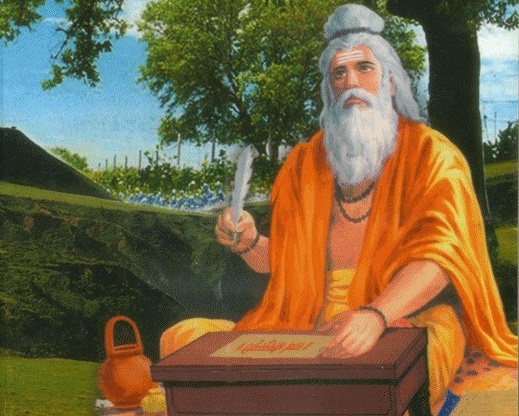
The topic covers the genesis of the problem from the perspective of the ancient historical roots of the problem right from the Vedic period. For ages, there has been a struggle for money and power and hence, socio-economic offences originated in the societal system. The smriti writers have laid down a set of principles to be followed by the people and king alike in the society. There has been a lot of progress from primitive to modern times.
No strict demarcation between Civil Wrong and Criminal Wrong
In the early stage of human civilization, people redressed his wrongs and avenged himself upon his enemies by his own hand, supported by the hands of his friends and kinsmen. In those days, every man was a judge of his own acts and might be the sole measure of right. During this time, there was no guarantee whether a criminal would be certainly punished or not and if punished, the punishment would be just and in proportion to the crime or not.
At a later stage, the primitive society provided for payment of something equivalent as compensation to the victims. The advantage of the system of compensation was readily recognized and it developed until a regular sliding scale was determined. The criminal wrong and civil wrong were treated almost equally as there was no trace of corporal punishment is serious cases. Even in the case of murder, the vengeance of the relatives could be brought off by paying ‘blood money‘, which varied according to the offence.
History of Administration of Justice
The history of the administration of justice starts with the rise of the political state. However, these infant states were not strong and powerful enough to regulate crime and inflict punishment on the criminal. The law of ‘private vengeance’ and ‘violent self-help’ continued to prevail. The state prescribed certain rules for the regulation of private vengeance. The state at this stage enforced the concept of ‘a tooth for a tooth‘ and ‘an eye for an eye‘ and a ‘life for a life‘.
What the state made sure was that life was not taken for a tooth, nor life for an eye. This was definitely marked as a stage in the advancement of the criminal justice system. As royal justice grew in strength, the law began to speak for itself and what followed was the modern theory of establishing an exclusive system to administer justice by the state. With the growth of the state’s power, the state began to act as a judge to assess liability and to impose penalties.
Laws relating to Socio-Economic Crimes in Ancient India
The study of any developed legal system requires a critical and analytical examination of its fundamental elements and conceptions as also the practical and concrete details which go make the contents or body of law. It also requires consideration of the line of development it has pursued. The expositions of the principles necessarily involved and the consideration in line development which it has pursued can be said is appropriate matters of jurisprudence. Law is a branch of Dharma. Its ancient framework is the law of Smritis.
The smritis are institutes which enounce rules of Dharma and the traditional definition of Dharma: ‘What is followed by those learned in the Vedas and what is approved by the conscience of the virtuous who are exempt from hatred and inordinate affection.‘ In Manu Smriti, the term ‘Dharma‘ has been explained and is an expression of wide import and means the aggregate of duties and obligations religious, moral, social, and legal. The four Vedas give us a clear view of society
- Rigveda
- Yajur Vega
- Sama Veda
- Atharva Veda
In the post-Vedic era national life, both, economic and political, expressed itself into various types of self-governing institutions but the basic trait of communal institutions continued to exist. The monarchy gave place to republics and economic life gave rise to the guilds of merchants and traders.

The Arthashastra advises the honesty of judges should be periodically tested, while the Vishnu Smriti prescribes banishment and forfeiture of all property for a judge found guilty of corruption and injustice.
Kautilya is more specific in another chapter entitled ‘Detection‘ of what is embezzlement by government servants out of state revenue which reads like a modern official report on modes of corruption and corresponding punishments. Ashoka’s dharmic state, following closely on the heels of Kautilya’s times, must have had the minimum of socio-economic crimes, for the emperor declared in one of the edicts.
Socio-economic crimes and bribery during Ashoka’s rule must have been the minimum. The law was not to be found merely in the texts of Smritis but also in the practices and usages which prevailed under it. The traditional law itself grounded on immemorial customs and provided for the inclusion of approved custom that is practices and usages that from time to time might come to be followed and accepted by the people. The Veda, the smriti, the approved usage, and what is agreeable to good conscience are according to Manu, the highest authority of the law, the quadruple direct evidence of Dharma. The Smritikars are those who preceded them, declared, and emphasized the divine origin and sanction of the rules of the dharma.
Smritikaar
The Smritikars and Yajnavalkya Smriti divided their treatment of subjects into –
- Aachaar
- Vyavahaar
- Prayaschit
The first and last are related to rules of religious observances and expiations. The early writers laid greater stress on these rules of Vyavahara, which is of civil law. The later smritikars mentioned above have treated Vyavahara in separate sections and exhaustively considered rules of positive law and Narada and some Smritikars have compiled only the rules of Vyavahara.